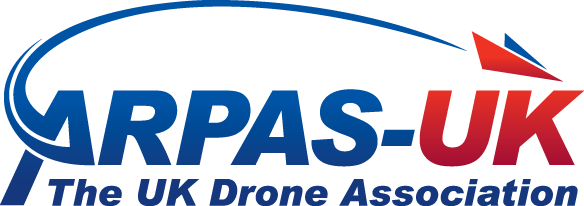Drone, RPAS, unmanned/uncrewed UAS…
“Drone” has become a generic word that is well understood by the general public, and that is the term we use most of the time, together with RPAS of course (remotely piloted aircraft system), or UAS (Uncrewed Aircraft System), or advanced aerial systems. Whatever the terminology, our vision of drones encompasses innovative aircrafts and related systems used for Aerial Operations (inspection, mapping, videography, surveillance…) up to and including Air Mobility.
Flying a drone is a Regulated Activity
In the United Kingdom, the Civil Aviation Authority, the CAA, is the statutory corporation which oversees and regulates all aspects of civil aviation.
WE PROVIDE INFORMATION TO FACILITATE YOUR UNDERSTANDING OF THE REGULATIONS. HOWEVER YOUR CORE SOURCE OF INFORMATION MUST BE THE CIVIL AVIATION AUTHORITY.
CAA DRONE WEBPAGE : CLICK HERE
CAA PUBLICATION WEBPORTAL: CLICK HERE
Roles and Responsibilities
In terms of organisation and legal responsibility, there is a distinction between the UAS Operator (like the airline company) and the Remote Pilot (like the pilot in command in the cockpit):
- The UAS operator is legally accountable for the safe management of the aircraft and must decide the necessary level of preparation, training, planning and oversight for the conditions and circumstances of flights. This includes flights they carry out themselves or that are carried out by anyone else using the operator’s aircraft.
- The remote pilot is responsible for carrying out the flight safely within the management framework set out by the operator. Operators must make sure they have effective management oversight for all flights using their aircraft.
There is no distinction between recreational or commercial operations, all pilots and operators are required to comply with law and regulations.
Individual pilots are both the pilot and the operator. Parents may be the operators while their under-age kids are remote pilots.
In organisations, the Operator is the company or the legal entity, and the remote pilot is the individual flying a mission.
Legislation, Acceptable Means of Compliance and Guidance Material AMC&GM, CAPs
There are several layers of applicable laws and regulations.
Legislation
The Air Navigation Order ANO 2016, as amended, is law. It sets out requirements for crewed aviation, and some also apply to uncrewed aircraft, with regards to key safety principles:
- ANO Art 240 endangering safety of an aircraft: “A person must not recklessly or negligently act in a manner likely to endanger an aircraft, or any person in an aircraft.”
- ANO Art 241 – endangering safety of any person or property: “A person must not recklessly or negligently cause or permit an aircraft to endanger any person or property.”
The Basic Regulation (BR) 2018/1139, the UAS Implementing Regulation (IR) 2019/947, and the UAS Delegated Regulation (DR) 2019/945 are also law and are dedicated to UAS operations.
Acceptable Means of Compliance and Guidance Material AMC&GM
Acceptable Means of Compliance and Guidance Material, as expressed in the name, are guidance material provided by the CAA in order to help interpret the law correctly.
AMC & GM is not law per se, and you could make an argument in court that there are other ways to comply with the law, that the CAA guidance is not the only way to comply, but you would need to build your case thoroughly. The CAA is developing its corpus of AMC & GM, in the hierarchy of regulation they are above CAPs, we strongly recommend to comply with the AMC & GM.
CAPs Civil Aviation Publications. The CAP722 series
The Civil Aviation Authority (CAA) publications are referred to as CAPS. CAPs are not law, and AMC & GM are above CAPs.
There are a number of useful CAPs for drone operations. The most important one is the CAP722 series, and we would advise to systematically check the latest publication on the CAA’s portal:
CAP 722: Unmanned Aircraft System Operations in UK Airspace – Guidance Version 9.1. 22 dec 2022

